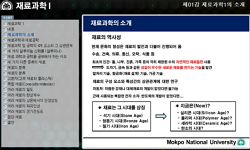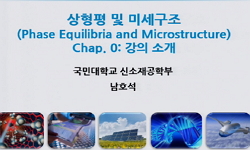<P><B>Abstract</B></P> <P>Micro- and nanoscale structures are of interest in various engineering fields due to their unique properties, such as hydrophobicity. In particular, micro/nano hierarchical structures have been ...
http://chineseinput.net/에서 pinyin(병음)방식으로 중국어를 변환할 수 있습니다.
변환된 중국어를 복사하여 사용하시면 됩니다.
- 中文 을 입력하시려면 zhongwen을 입력하시고 space를누르시면됩니다.
- 北京 을 입력하시려면 beijing을 입력하시고 space를 누르시면 됩니다.


Direct printing of anisotropic wetting patterns using aerodynamically focused nanoparticle (AFN) printing
한글로보기https://www.riss.kr/link?id=A107502017
- 저자
- 발행기관
- 학술지명
- 권호사항
-
발행연도
2017
-
작성언어
-
- 주제어
-
등재정보
SCOPUS,SCIE
-
자료형태
학술저널
-
수록면
1450-1457(8쪽)
- 제공처
-
0
상세조회 -
0
다운로드
부가정보
다국어 초록 (Multilingual Abstract)
<P><B>Abstract</B></P> <P>Micro- and nanoscale structures are of interest in various engineering fields due to their unique properties, such as hydrophobicity. In particular, micro/nano hierarchical structures have been investigated to promote surface hydrophobicity. Here, aerodynamically focused nanoparticle (AFN) printing was used for direct printing of superhydrophobic patterns. As AFN printing is a room-temperature direct printing technique, printed features have a hierarchical structure of two levels; nanoscale porous surface and microscale-printed patterns in three-dimensional structures. Moreover, because it is an additive fabrication technique, the printed pattern is repairable and can be reconfigured as desired. In this study, silver nanoparticles were used to implement a superhydrophobic pattern with a minimum width of tens of microns. The contact angle of water droplets was measured for various patterns, and the effects of nanoscale porosity and pattern interval were investigated. In addition, patterns were designed and fabricated to have anisotropic superhydrophobicity. The experimental results were analyzed and explained with the classical Wenzel and Cassie–Baxter models.</P> <P><B>Highlights</B></P> <P> <UL> <LI> AFN printing was used to print superhydrophobic patterns on silicon substrates. </LI> <LI> A lattice pattern was fabricated using silver nanoparticles to form a hierarchical structure. </LI> <LI> Printed features have nanoscale porous surfaces on microscale patterns. </LI> <LI> Superhydrophobicity was observed for various pattern intervals in lattice patterns. </LI> <LI> Patterns were designed and fabricated to have anisotropic superhydrophobicity. </LI> </UL> </P> <P><B>Graphical abstract</B></P> <P>[DISPLAY OMISSION]</P>
동일학술지(권/호) 다른 논문
-
Narrow band gap and visible light-driven photocatalysis of V-doped Bi6Mo2O15 nanoparticles
- Elsevier
- Xu, Jian
- 2017
- SCOPUS,SCIE
-
Recent progress and perspectives in the photocatalytic CO2 reduction of Ti-oxide-based nanomaterials
- Elsevier
- Sohn, Youngku
- 2017
- SCOPUS,SCIE
-
- Elsevier
- Kwon, Young-Tae
- 2017
- SCOPUS,SCIE
-
- Elsevier
- Kim, Jinwoo
- 2017
- SCOPUS,SCIE




 ScienceON
ScienceON





